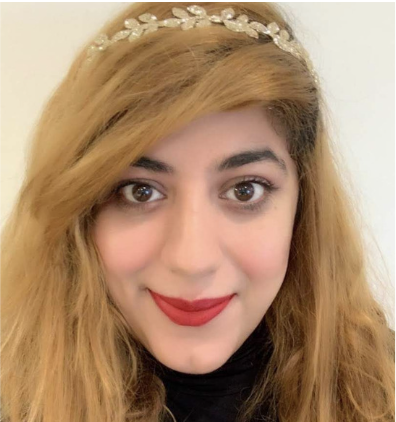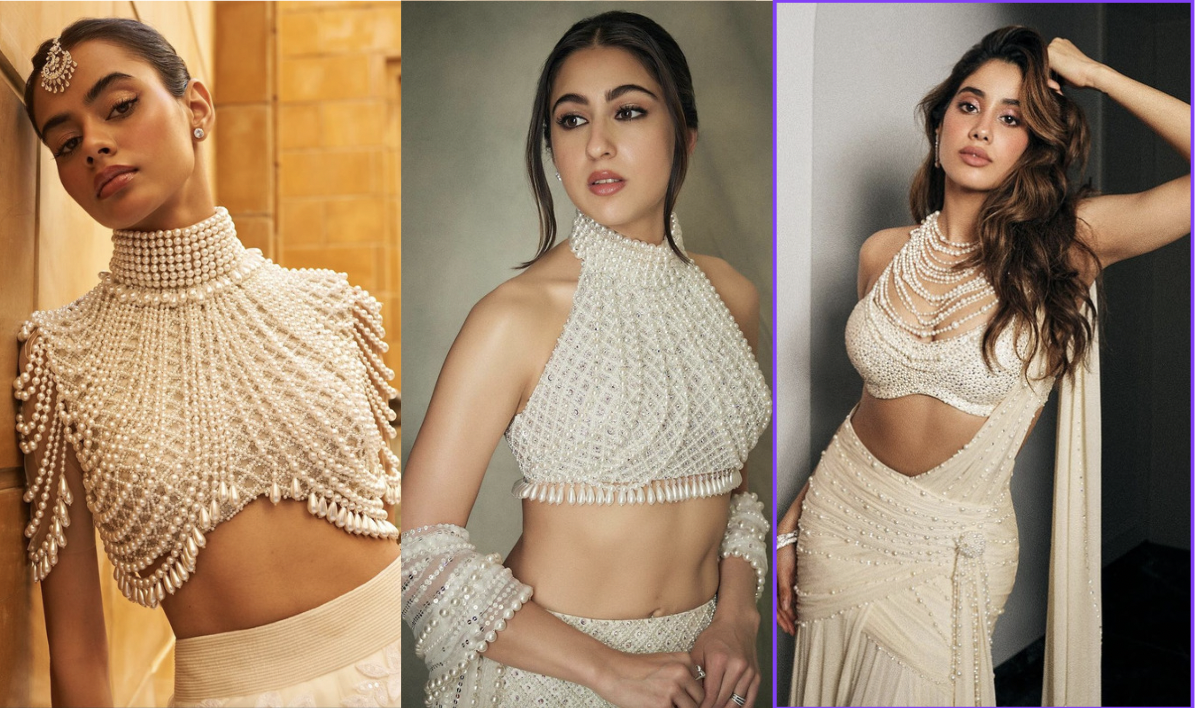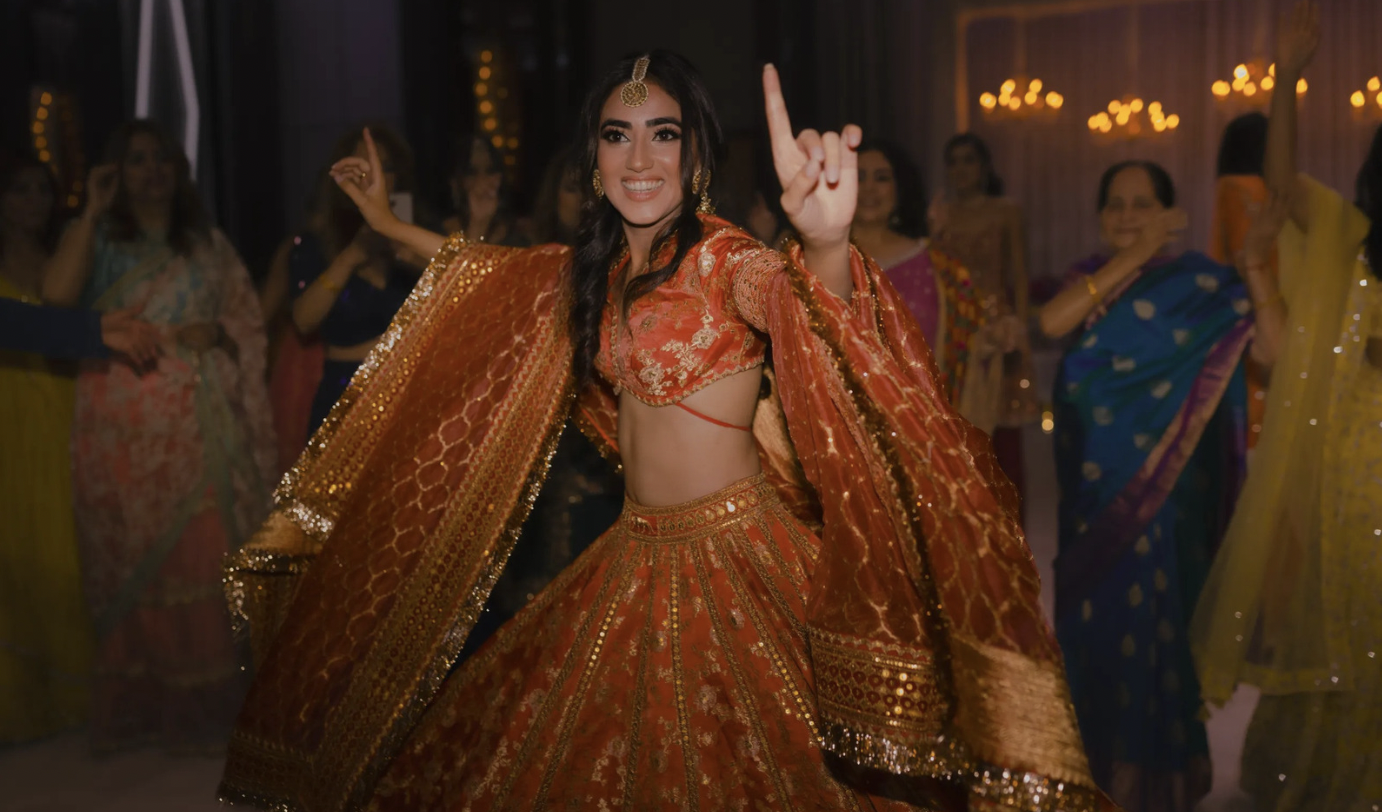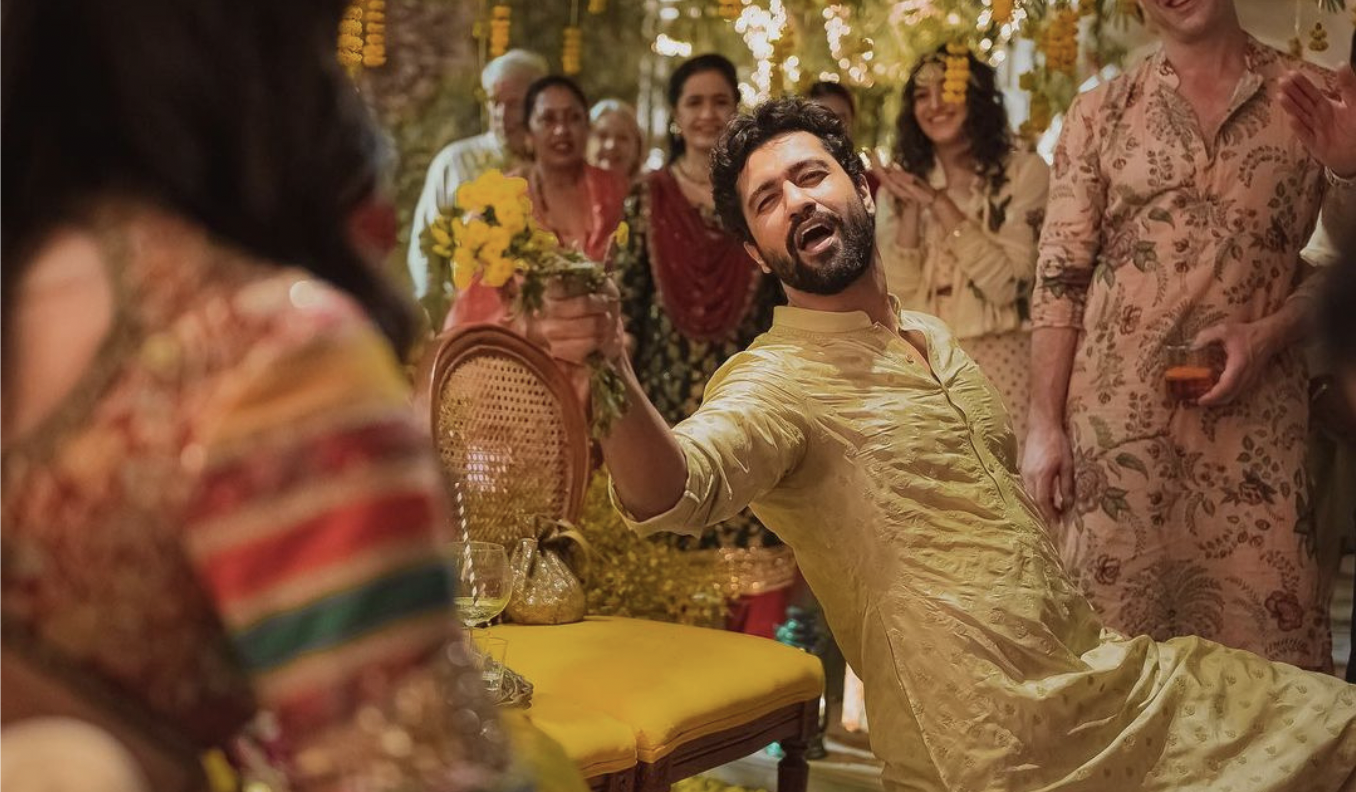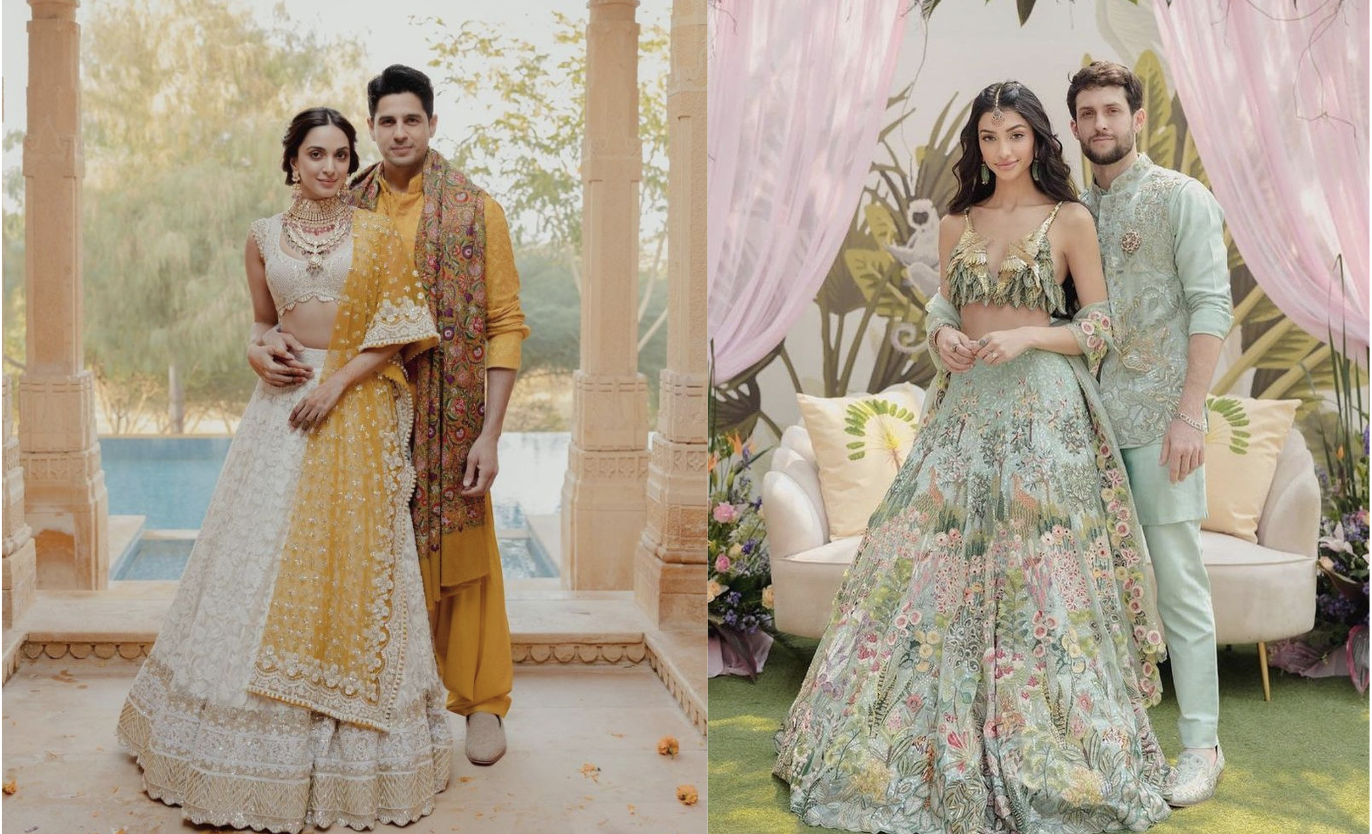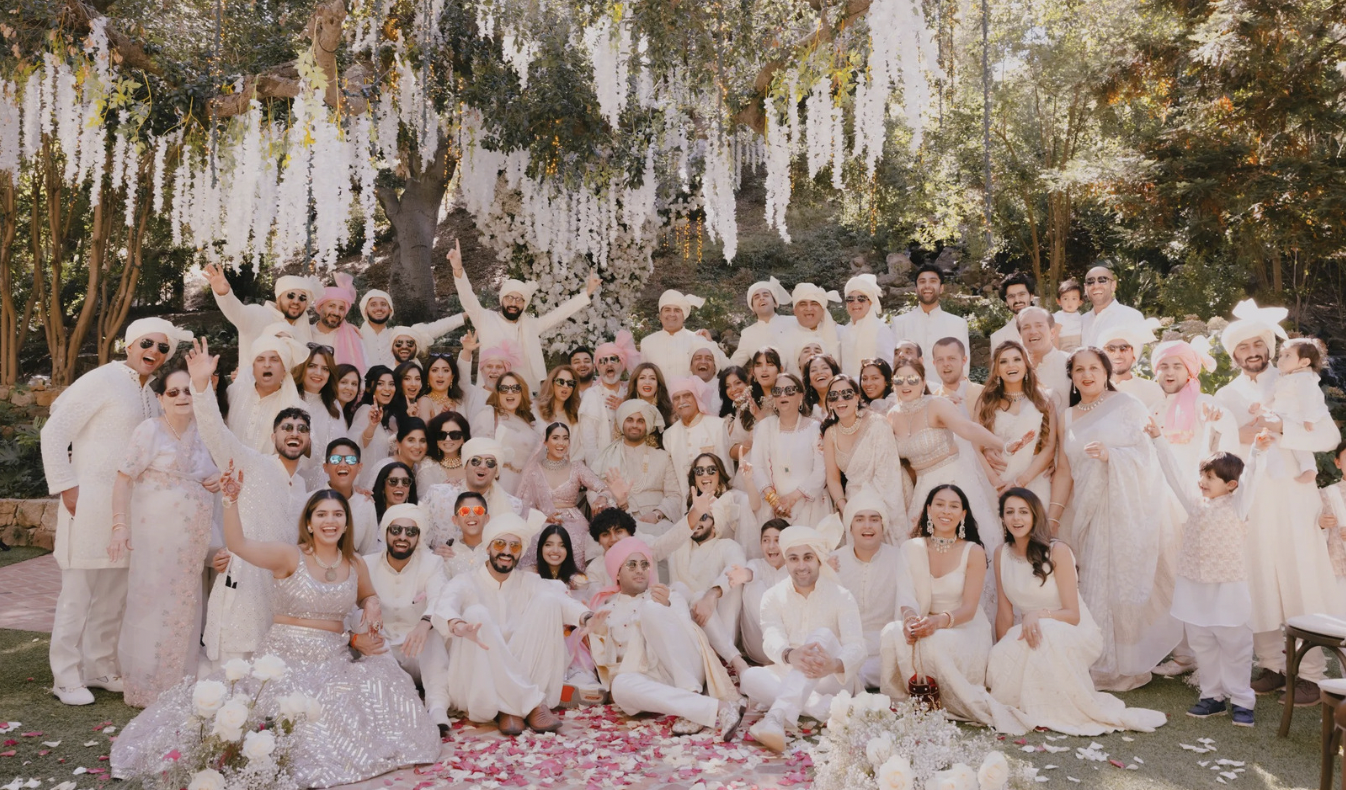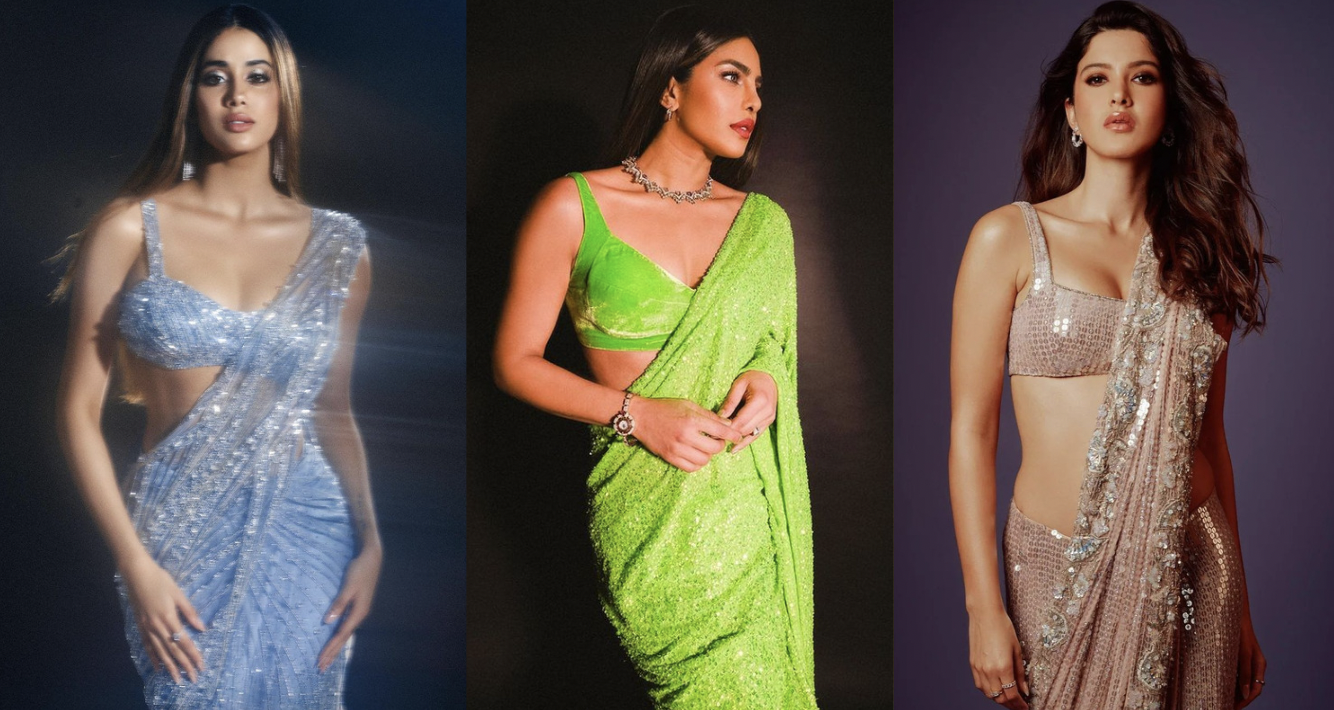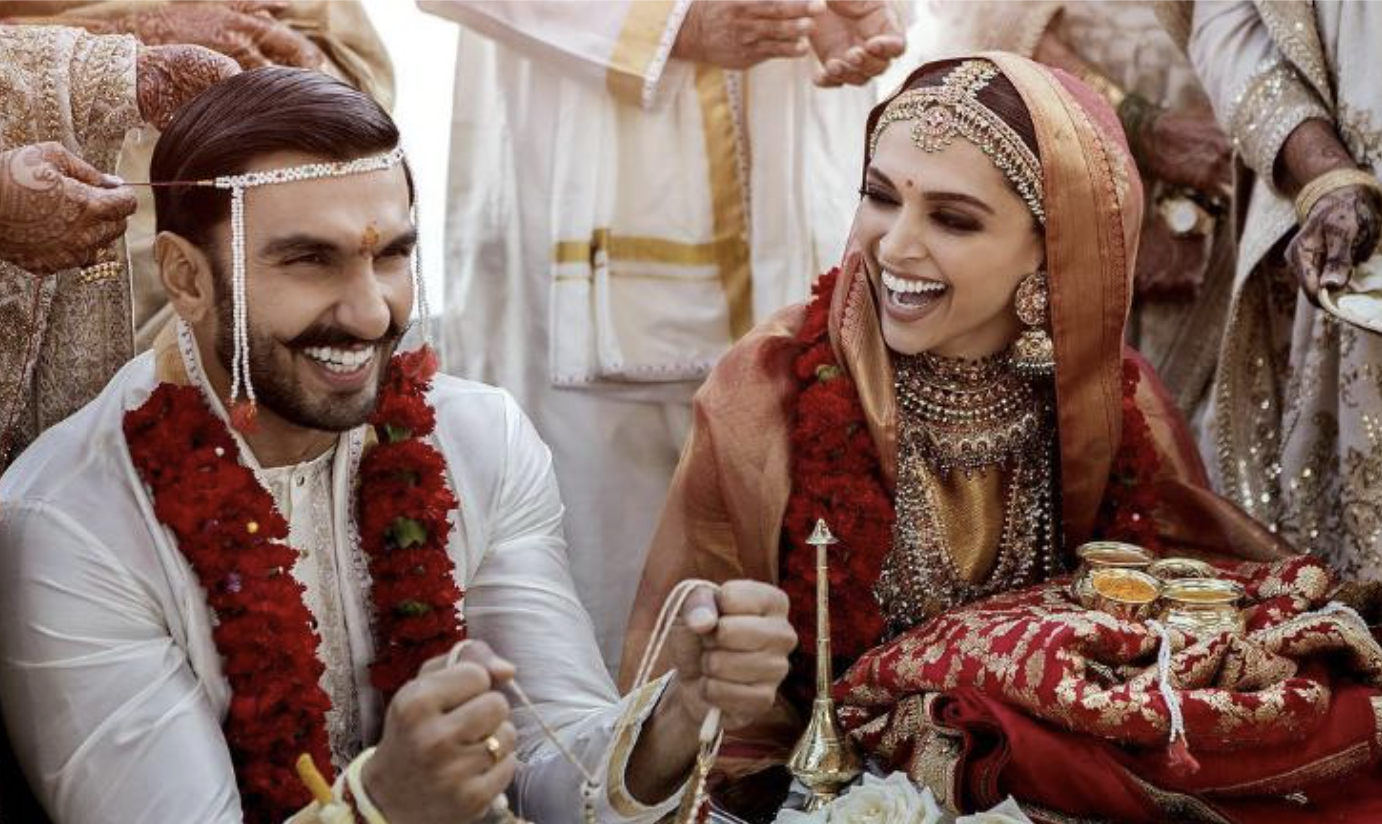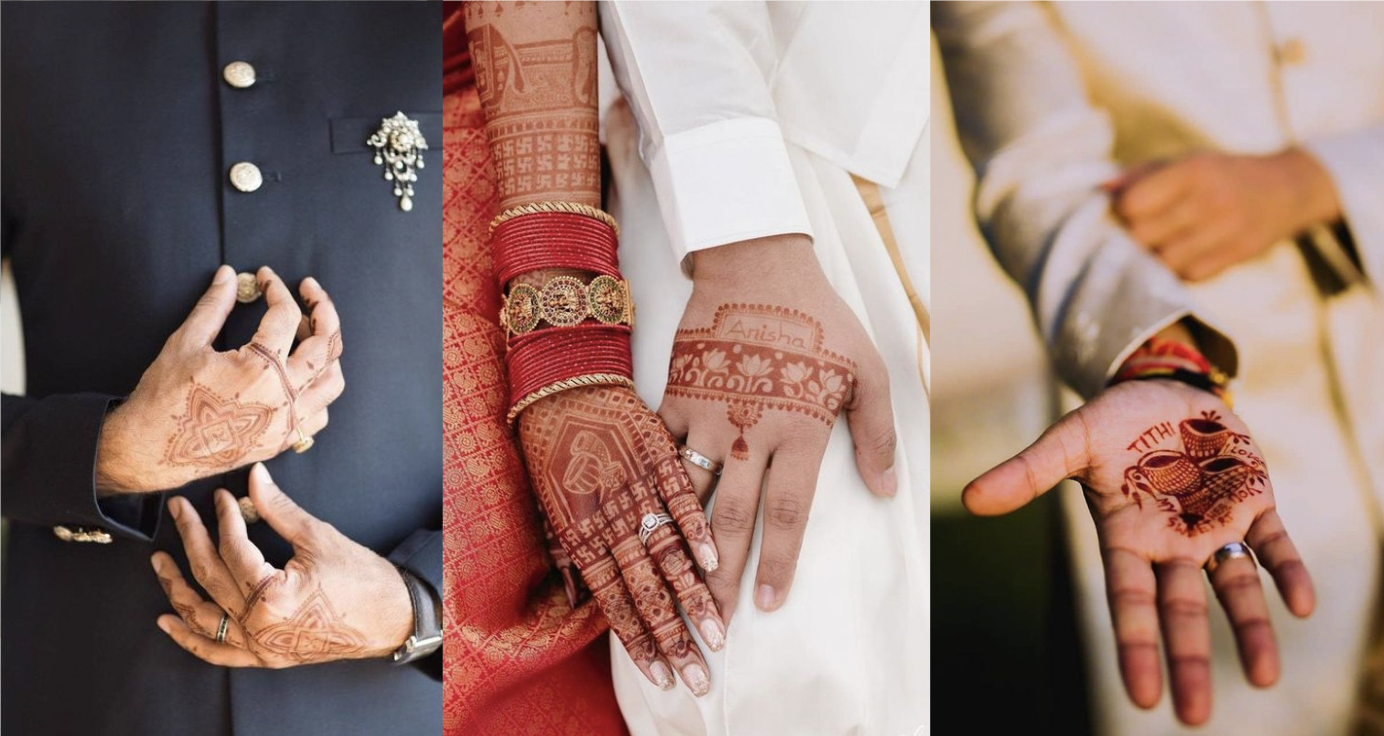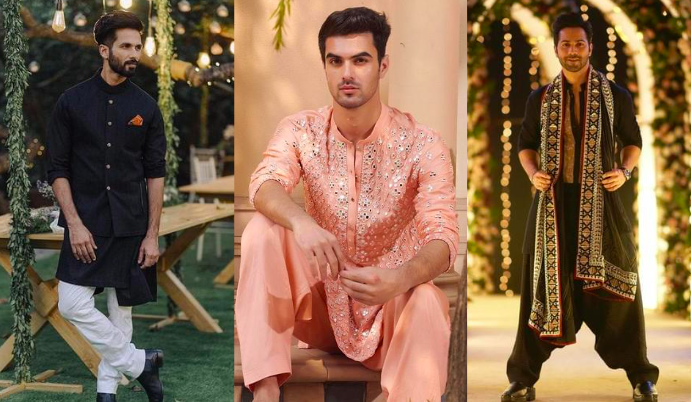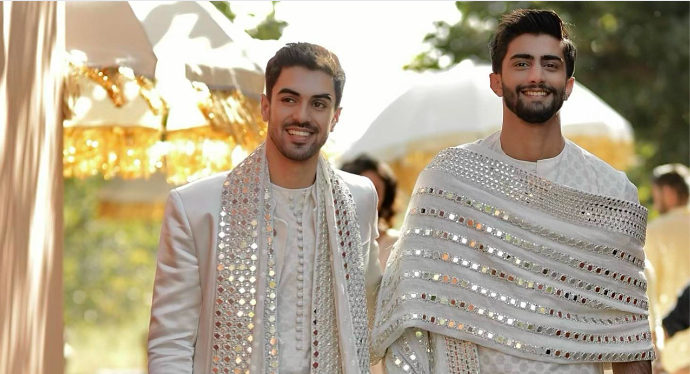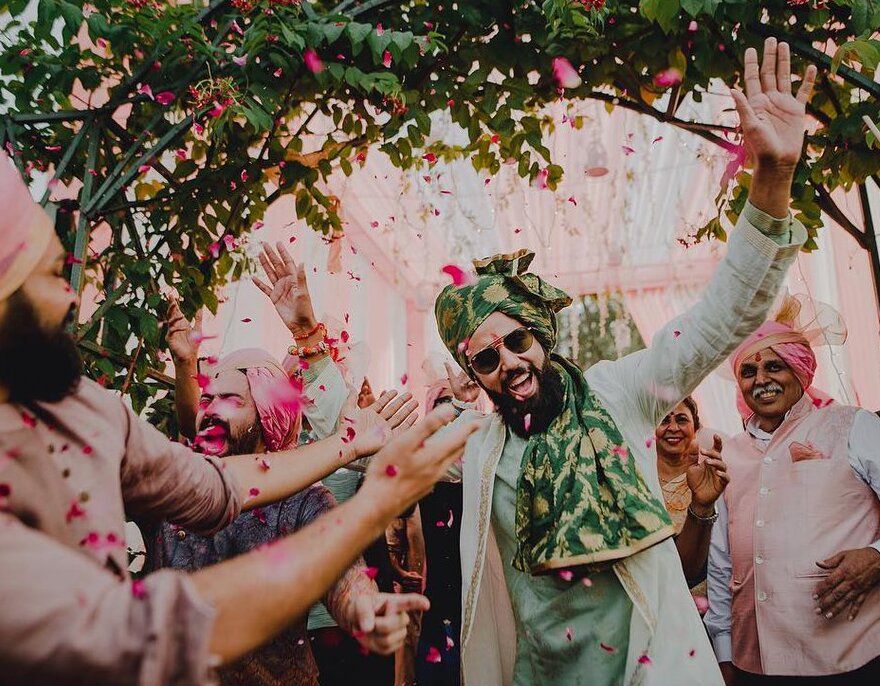12 Must-Have Accessories For South Asian Grooms
Groom Fashion SachiAccessories play a pivotal role in enhancing the attire of South Asian grooms, adding depth, elegance, and cultural significance to their overall look. These accessories are more than just embellishments; they hold cultural, traditional, and symbolic importance in the context of weddings. They accentuate the groom's attire, be it a traditional sherwani, achkan, or a Western-inspired suit. They include items like turbans, brooches, sehra (veil), necklaces, earrings, and bracelets, each meticulously chosen to coordinate with the outfit, reflecting the groom's personality, style, and cultural heritage.
Additionally, accessories bear profound symbolism. For instance, the Kirpan, a ceremonial sword, signifies the groom's bravery and readiness to protect. The necklace, called "haar" or "mala," may hold religious or cultural significance. The turban, with its myriad styles and adornments, communicates dignity and honor.
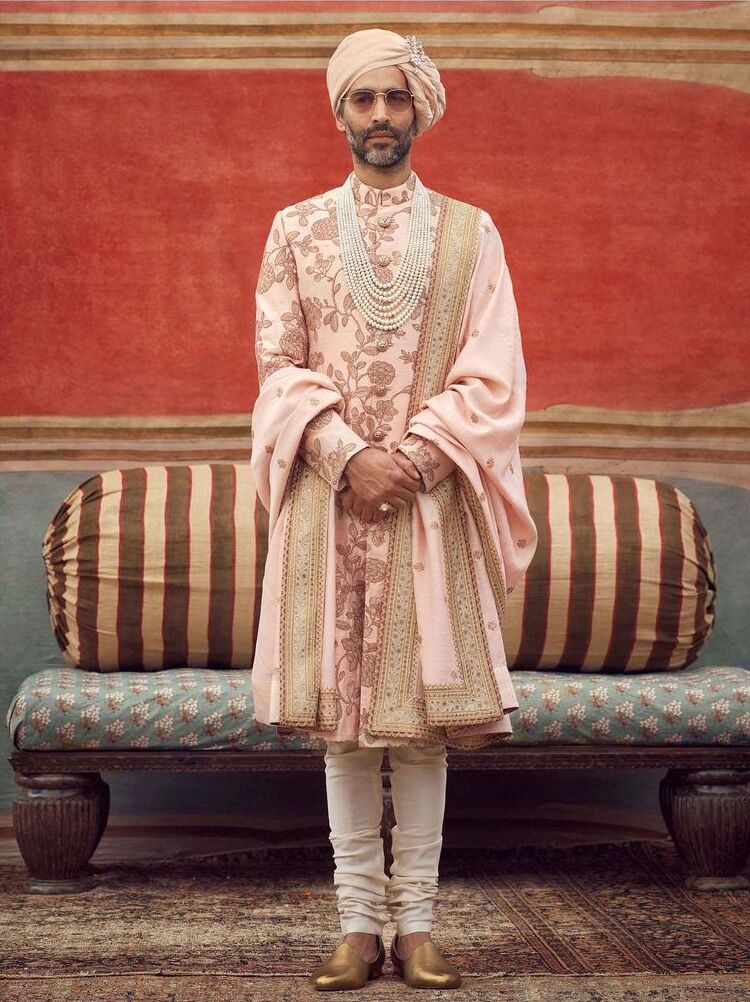
Source: Grooms of Sabyasachi
Accessories for South Asian Grooms
Accessories are a testament to the attention to detail. South Asian grooms select these items with meticulous care, demonstrating their commitment to the sacredness of the occasion. In essence, these accessories transform the groom into a resplendent embodiment of tradition, culture, and style, making him not just the center of attention but also a symbol of timeless elegance and rich heritage.
This article delves into the myriad accessories at the disposal of South Asian grooms, ensuring that they achieve a truly distinguished and captivating look on their significant day, ensuring they remain the center of attention.
1. Turban (Pagri/Safa)
.jpg)
The turban, known as Pagri or Safa, is a hallmark of South Asian groom's attire, adding a sense of grandeur and tradition to their look. Typically, it is crafted from luxurious fabrics like silk or brocade, often chosen to match the wedding outfit's color and design. The turban signifies honor and respect in South Asian culture, making it an essential accessory for the groom.
The intricately tied turban reflects the groom's social and regional identity. It's often adorned with embellishments like zari work, pearls, or jewels, adding an opulent touch. The turban holds immense cultural significance, symbolizing the groom's readiness to take on the responsibilities of marriage and family life.
2. Sehra

Source: Sam & Ekta
The Sehra is a veil or floral garland that covers the groom's face during the wedding procession, symbolizing purity and protection. It is traditionally used to shield the groom from evil spirits and ward off any negative energy, signifying the protective role the groom will play in the life of his bride. The Sehra is meticulously crafted with fragrant flowers or decorative beads, enhancing the groom's charisma and adding an ethereal touch to his wedding ensemble.
3. Kalgi
.jpg)
Source: Amrit Photography
The Kalgi is a decorative brooch or pin that adorns the turban. These pins are often elaborately designed and can be embedded with precious stones or embellished with feathers. The Kalgi serves as a symbol of honor and adds a royal touch to the groom's turban. It signifies the groom's elevated status on his wedding day, reflecting his position as the prince of the occasion.
4. Necklace (Haar/Mala)
.jpeg)
Source: Unfolding Ramneek and Jon’s Rustic Inter-cultural Wedding in Toronto
The Haar or Mala is a heavy beaded necklace, often made of gold, pearls, or other valuable materials, that the groom wears around his neck. It serves as a symbol of opulence and blessings. Some necklaces also have religious or cultural significance, with pendants or motifs denoting the groom's faith or heritage. It adds an extra layer of elegance and regality to the groom's overall appearance, highlighting his importance on this special day.
5. Earrings
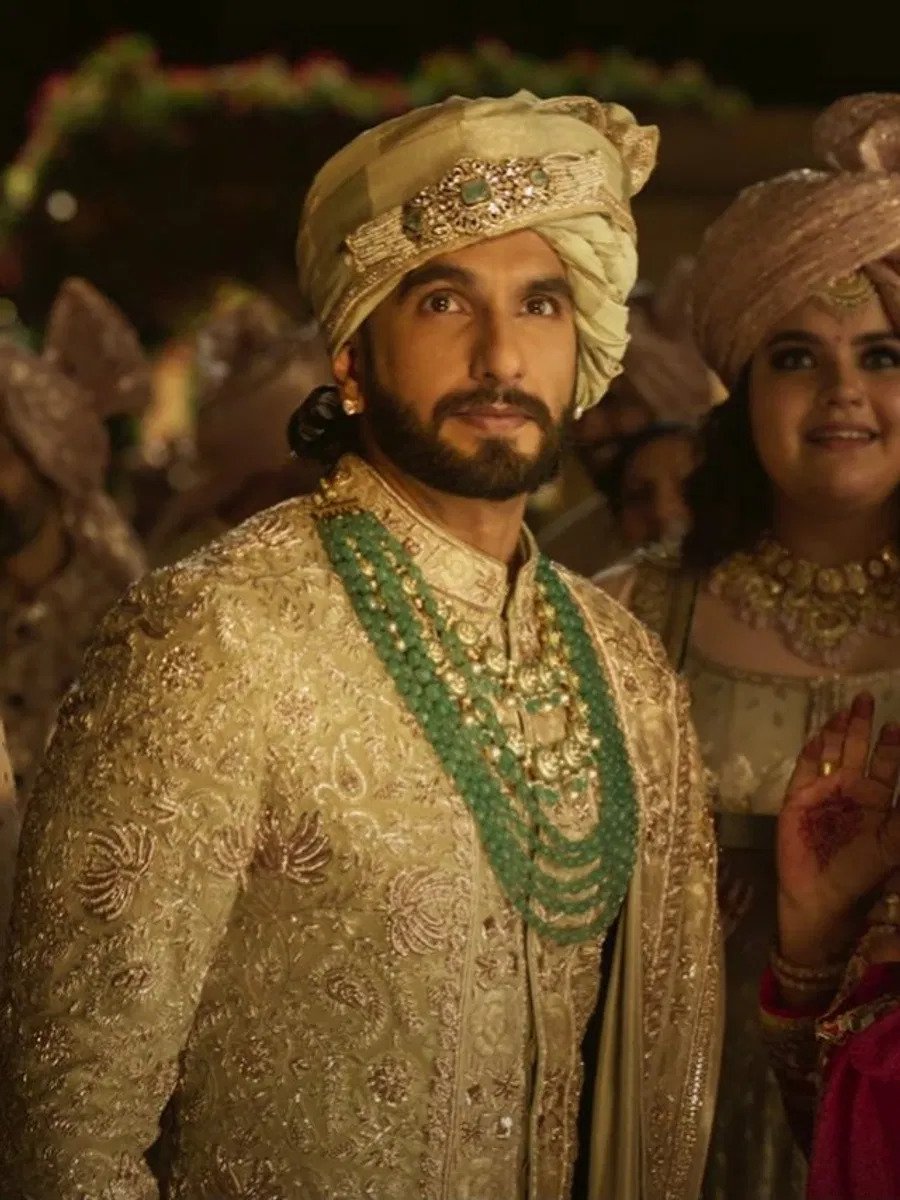
Earrings are intricate accessories that South Asian grooms wear to complement their wedding attire and infuse a touch of elegance into their appearance. These elaborate earrings, typically Kundan or Jhumka styles, are adorned with precious gems, adding a sense of grandeur. They frame the groom's face, drawing attention to his eyes and facial features, enhancing his overall charisma.
6. Bracelet (Kada/Kara)
The Kada or Kara is a bangle-style bracelet, often made of gold or other precious metals, worn by the groom to symbolize marital commitment. It signifies his promise to protect and support his bride and uphold the values of his culture and faith. The bracelet adds a regal and masculine touch to the groom's ensemble, emphasizing the significance of this momentous occasion in his life. It's a testament to the groom's dedication and devotion to his bride and their shared journey together.
7. Brooch (Sherwani or Achkan brooch)
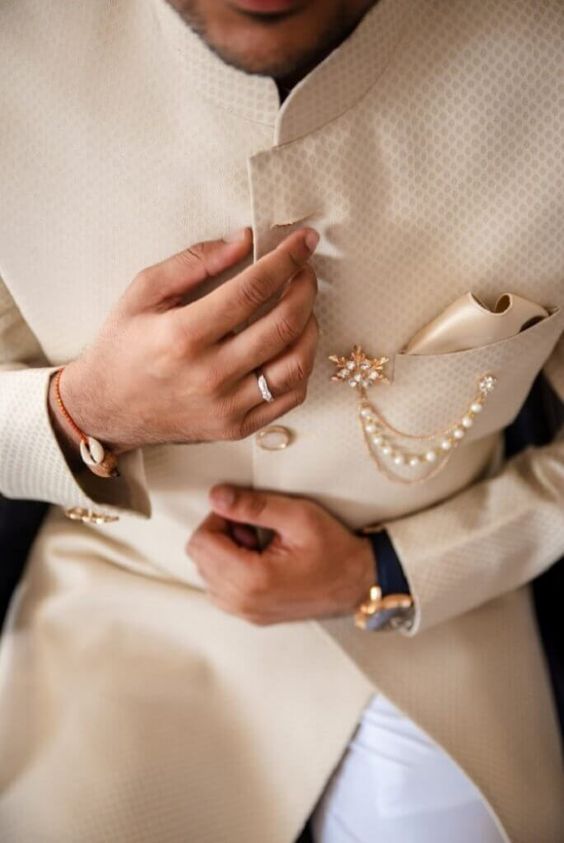
A brooch is a small but significant accessory for South Asian grooms. It is typically worn on the sherwani or achkan, the groom's traditional outer garment. This decorative pin adds an exquisite touch of sophistication to the groom's attire. The brooches are often crafted with intricate designs, precious stones, and metals, such as gold or silver, making them a focal point of the ensemble. They can range from simple to highly ornate, reflecting the groom's style and the overall wedding theme.
These brooches are more than just aesthetic elements; they carry cultural and regional significance. They symbolize attention to detail and respect for tradition, highlighting the groom's commitment to his cultural heritage. Whether a groom opts for a classic, timeless brooch or one that's unique and personalized, it's a piece that holds sentimental value and elevates the entire look. The brooch adds a touch of regal charm to the groom's outfit, underlining the importance of every detail in the South Asian wedding attire.
8. Sword (Kirpan)
.jpg)
Source: Sunnys Bridal Gallery
The Kirpan is a ceremonial sword carried by Sikh grooms during their wedding ceremonies. It holds deep cultural and symbolic significance, representing bravery, readiness to protect, and the moral and spiritual values of Sikhism. The Kirpan is an integral part of the Sikh faith and is traditionally worn as a symbol of the Sikh's duty to protect the weak and uphold justice.
On the wedding day, the Kirpan is not just an accessory but a sacred symbol of the groom's commitment to his faith and his bride. It serves as a reminder of the Sikh warrior spirit and the responsibility to stand against injustice. While it may not be used for practical purposes during the ceremony, its presence is a powerful and solemn representation of the groom's commitment to protecting his family, community, and the sanctity of the marriage.
The Kirpan is typically worn with great pride, suspended by a specially designed strap or sash, making it a prominent and respected element of the groom's wedding attire. Its presence is a poignant reminder of the groom's devotion to both his faith and his role as a protector and provider for his new family.
9. Pocket Square
.jpeg)
Source: Shutterdown by Lakshya Chawla
A pocket square is a small, yet essential accessory for South Asian grooms. It consists of a matching piece of fabric, often cut in a square shape, that is neatly folded and placed in the breast pocket of the groom's sherwani or achkan. This seemingly simple addition plays a crucial role in adding a polished and refined touch to the groom's attire.
The pocket square not only complements the fabric and color of the outfit but also adds a dash of sophistication and personality. Grooms can choose from a range of folding styles, from classic presidential folds to more intricate and creative designs, allowing them to express their unique style. The pocket square serves as a finishing touch, drawing attention to the groom's attention to detail and sense of elegance.
In addition to its aesthetic appeal, the pocket square reflects the importance of balance and symmetry in South Asian wedding attire. It harmonizes with the overall look, enhancing the groom's regal appearance. This small accessory, with its simple yet refined charm, is a testament to the groom's commitment to presenting himself with the utmost grace and style on his special day.
10. Footwear (Mojari or Khussa)
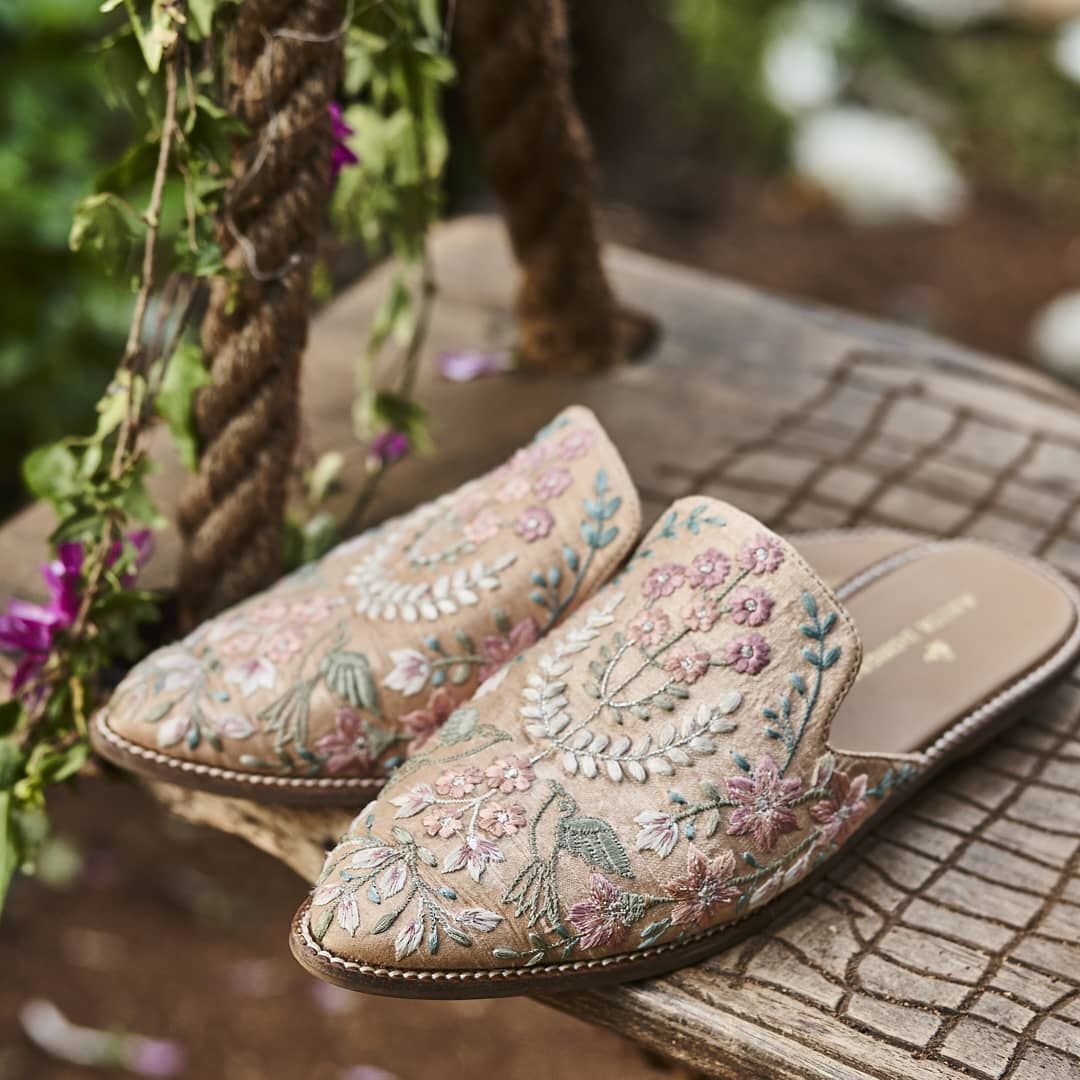
Source: Anita Dongre
Footwear is a significant component of the South Asian groom's attire, and mojari or khussa, traditional shoes, are often the footwear of choice. These shoes are exquisitely crafted, bearing intricate embroidery and embellishments, and are typically made from leather or silk. The choice of footwear reflects not only the groom's style but also his cultural heritage and the overall theme of the wedding.
Mojari and khussa come in a variety of styles, from simple and elegant to highly ornate. They are designed to match the groom's outfit, often featuring motifs or colors that coordinate with the sherwani or achkan. The elaborate craftsmanship of these shoes makes them a striking element of the groom's look, ensuring that even his feet exude style and tradition.
Wearing mojari or khussa on the wedding day not only showcases the groom's sense of fashion but also symbolizes his connection to his cultural roots. These traditional shoes hold a special place in South Asian weddings, and their intricate detailing adds to the overall opulence of the groom's ensemble. They provide comfort and style, making them an essential part of the groom's wedding attire.
11. Stole (Dupatta)
.jpeg)
Source: ARJ Photography
A stole, also known as a dupatta, is a versatile and elegant accessory that South Asian grooms often drape over their shoulders to add an extra layer of refinement to their wedding attire. This piece of fabric can either match or contrasting with the groom's outfit, and its use varies depending on regional customs and personal preferences.
When worn matching the outfit, the stole complements and enhances the overall look, adding depth and sophistication. A contrasting stole, on the other hand, can introduce a pop of color and visual interest to the ensemble, making it stand out even more. The stole can be draped in various styles, from a simple shoulder wrap to a more elaborate arrangement, depending on the groom's taste.
Besides its aesthetic value, the stole holds cultural significance. It often represents the groom's connection to his heritage and traditions. In some regions, it may be embroidered with intricate patterns or symbols, further emphasizing its cultural importance. The stole is a versatile accessory that contributes to the groom's elegance and allows him to express his style while respecting tradition.
12. Watch and Cufflinks
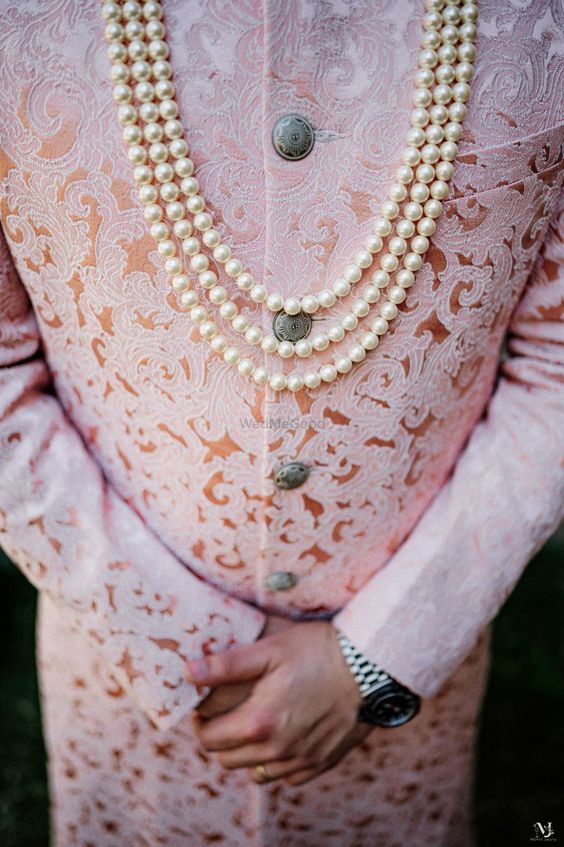
Source: Mohit Jaura Photography
Incorporating a modern touch into traditional attire, grooms often opt for stylish watches and cufflinks to complete their look. These accessories are emblematic of the groom's attention to detail and refinement.
Watches come in various styles, from classic timepieces to contemporary designs. The choice of the watch reflects the groom's taste and can be a symbol of his transition into married life, marking the importance of time and commitment.
Cufflinks, on the other hand, add a touch of sophistication to the groom's sherwani or achkan. They are often made of precious metals and adorned with gemstones, matching the color scheme and design of the wedding attire. Cufflinks are more than just functional; they are an expression of the groom's personality and style.
Both the watch and cufflinks showcase the harmonious blend of tradition and modernity in South Asian weddings. While the groom adheres to cultural customs by wearing traditional attire, these accessories allow him to infuse contemporary elements into his look, symbolizing his readiness to embark on a new chapter in his life.
Conclusion
The accessories worn by a South Asian groom are not just ornamental but integral to his overall appearance. Each accessory, whether it's a brooch, sword, pocket square, footwear, stole, or modern elements like watches and cufflinks, contributes to a comprehensive and culturally rich wedding look. These items symbolize tradition, cultural heritage, style, and personal expression, enhancing the groom's elegance on his special day.
We encourage readers to explore the diverse world of South Asian wedding accessories, experiment with different styles, and share this article with their friends preparing for their weddings. By embracing the power of these accessories, grooms can make their wedding day not just memorable but truly remarkable.
Proof Read & Photos Sourced By: Neha Garg Ahuja

